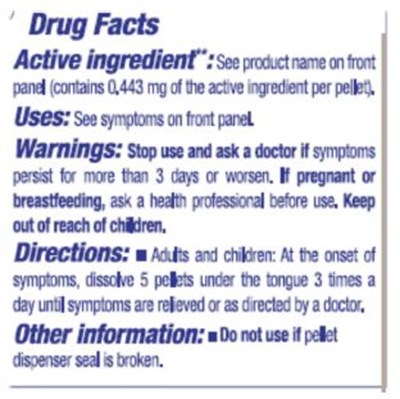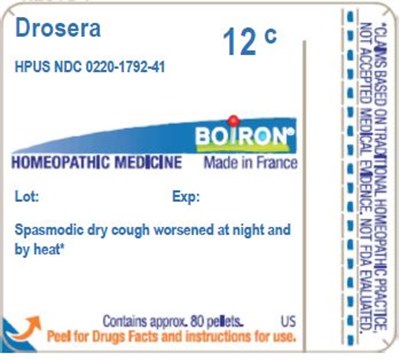Product Images Drosera
View Photos of Packaging, Labels & Appearance
Product Label Images
The following 3 images provide visual information about the product associated with Drosera NDC 0220-1792 by Boiron, such as packaging, labeling, and the appearance of the drug itself. This resource could be helpful for medical professionals, pharmacists, and patients seeking to verify medication information and ensure they have the correct product.
label - 2ND PANEL

This appears to be the packaging or label information for a drug product. The label includes a section for drug facts, inactive ingredients, and contact information for questions or comments. The product appears to be homeopathic and includes various dilutions listed as G, K, CK, and X. There is also a website provided for more details about the homeopathic dilutions. However, the content is not fully readable due to errors.*
label - 3RD PANEL

This is a drug information label. The active ingredient is not mentioned, but it is written on the front of the product. Each pellet contains 0.443 mg of the active ingredient. The label provides usage instructions including the symptoms it is used for, dosage for adults and children, and warnings to stop use and consult a doctor if symptoms persist or worsen after taking the medication. Usage is not recommended for pregnant or breastfeeding women before consulting a healthcare professional. Not much else is mentioned except not to use the product if the pellet dispenser seal is broken.*
label - DROSERA12C

This is a description of a homeopathic medicine called Drosera. It is made in France and comes in a container with 2 proc B0 pills. The text lists a possible symptom of the medicine which is a spasmodic dry cough worsened at night and by heat. The text also includes the standard information of lot expiration and the HPUS NDC code. Additionally, the text includes the statement H Poel for Drugs Facts and instructions for use.*
* The product label images have been analyzed using a combination of traditional computing and machine learning techniques. It should be noted that the descriptions provided may not be entirely accurate as they are experimental in nature. Use the information in this page at your own discretion and risk.